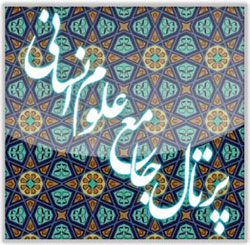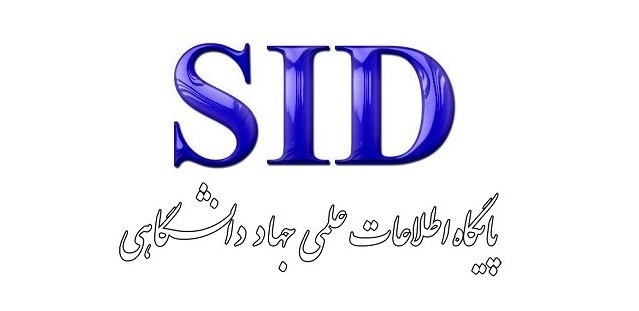The Relationship Between Protective Hijab and Islamic Citizenship Rights with Reference to the Constitution
Keywords:
hijab, safeguard hijab, Islamic citizenship, constitution.Abstract
Hijab is one of the fundamental rulings of Islamic Sharia, encompassing both individual and social dimensions. The social aspects of hijab are closely related to the citizenship rights of individuals. For this reason, the present study addresses the connection between hijab and citizenship rights by referencing principles of the Constitution. The central question posed is: In what ways can protective hijab contribute to Islamic citizenship rights? The findings of the study demonstrate that lack of hijab is detrimental both to individuals and society; it undermines the rights of other citizens in an Islamic society. Moreover, based on the principle of rights and duties, citizens in an Islamic community have a significant responsibility to observe social norms and promote good behavior. Ultimately, protective hijab serves as a guarantor of collective well-being within the family and the broader society. Neglecting this obligation constitutes a violation of citizenship rights in society, given that hijab—like any other right—must be respected as a normative standard by other members of the community. Although the issue of hijab is not explicitly addressed in the Constitution, Article 4 of the Constitution mandates that all laws and regulations must be based on Islamic principles, thereby legitimizing the societal expectation of religious dress codes. Furthermore, Article 638 of the Islamic Penal Code (ratified in 2013) classifies public unveiling as a criminal offense. Practical strategies for realizing the concept of protective hijab include promoting a culture of modesty based on moderation within the family unit, and subsequently, establishing a comprehensive law regarding hijab in Islamic society. This study employs a descriptive-analytical method and utilizes library resources as its primary tool of data collection.
References
Akbari, M. (2002). Honor and Its Vulnerabilities. Golestan Publications.
Falsafi, M. T. (2000). Philosophical Discussions on Children from the Perspective of Heredity and Education. Islamic Culture Publishing Office.
Gholami, A. (2013). Theoretical Foundations of State Intervention in the Issue of Hijab. Public Law Quarterly, 2(6), 47-67.
Goudarzi, S. (2017). Women's Right to Dress and the Islamic Revolution. Biannual Journal of Human Rights and Citizenship, 2(1), 41-60.
Hur Amili, M. b. A. (1996). Wasa'il al-Shia ila Masa'il al-Sharia. Al-Bayt Institute Publications.
Javadi Amoli, A. (2007). Rights and Duties in Islam. Asra Publishing Center.
Javid, M. J. (2009). The Theory of Relativity in Citizenship Rights. Gerayesh Publishing.
Kulayni, M. b. A. (2014). Usul al-Kafi. Dar al-Thaqalayn Publications.
Majlesi, M. B. (1983). Bihar al-Anwar. Islamic Publications.
Makarem Shirazi, N. (1995). Tafsir Noor. Ali Ibn Abi Talib School PublicationsER -.
Makarem Shirazi, N. (2012). The Principle of No Harm. Imam Ali Ibn Abi Talib Publications.
Maleki Boroujeni, N. (2017). The Relationship Between Hijab, Human Rights, and Citizenship. Biannual Journal of Islamic Human Rights Studies, 6(13), 139-168.
Mesbah Yazdi, M. T. (2016). A Brief Introduction to the Theory of Guardianship of the Jurist.
Meshkini, A. (2017). Al-Mawa'idh al-Adadiyah. Dar al-Hadith Publishing Organization.
Motahhari, M. (2009). The Issue of Women. Sadra Publications.
Nash, K. (2010). Contemporary Political Sociology: Globalization, Politics, Power. Kavir Publishing.
Qomi, S. A. (2017). Safinat al-Bihar. Astan Quds Razavi Research Foundation Publications.
Sadeghian, E., & Sajedi, A. M. (2015). The Philosophy of Hijab and Modesty in Islam and Its Relationship with Mental Health in Individual and Social Life. First National Conference on Islam and Mental Health,
Sheikh Saduq, M. A. I. B. (2002). Al-Khisal. Islamic Publications.
Tabatabai, S. M. H. (1995). Tafsir al-Mizan. Islamic Publications.
Zahedian, M. H., & Sadri Arhami, M. (2020). Examining the Position of Hijab in Human Rights from the Perspective of Universalism and Relativism. Scientific, Cultural-Educational Journal of Women and Family, 15(52SP - 85), 109.
Downloads
Published
Submitted
Revised
Accepted
Issue
Section
License
Copyright (c) 2025 سیده زهرا سجادی (نویسنده); علی اکبر عارف (نویسنده مسئول); محسن زارعی جلیانی (نویسنده)

This work is licensed under a Creative Commons Attribution-NonCommercial 4.0 International License.








